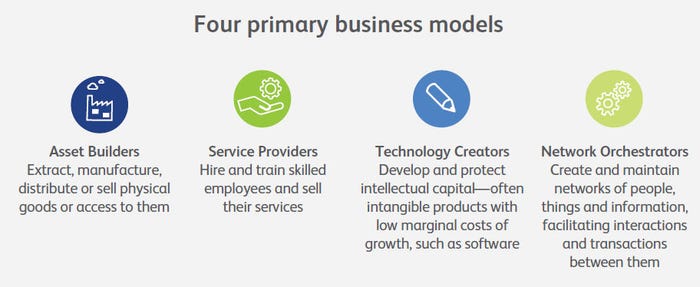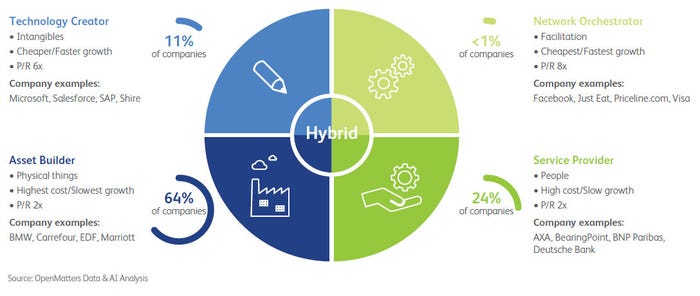Traditional operators are incapable of digital transformation
The Digital Transformation World event this week shone a light on quite how far from achieving digital transformation many operators are.
May 17, 2018

The Digital Transformation World event this week shone a light on quite how far from achieving digital transformation many operators are.
Such is the perceived importance of this concept to the future health of the CSP industry that TM Forum, which has traditionally been more focused on just the underlying technology used by CSPs, decided to rebrand its big show of the year accordingly. Everyone in attendance seemed to agree it’s important, but that certainly doesn’t mean it’s going to happen anytime soon.
First, what the hell is ‘digital transformation’? Like many persistent buzzwords it’s sufficiently broadly and vaguely-defined that it can be applied to pretty much every aspect of corporate evolution. In the context of CSPs it’s generally understood to refer to the necessity of changing the way they do things to match the speed of innovation typically associated with Silicon Valley internet companies. Or, as CEO of Digital Platform Solutions at consultancy BearingPoint Angus Ward said at the show “How do you create more compelling, differentiated products and services that are harder for other people to copy?”
In this respect digital transformation (which we would abbreviate if it wasn’t for Deutsche Telekom – sigh) can be broadly subdivided into technological and cultural evolution. The former concerns all the cleverness currently underway in virtualizing, cloudifying and automating network management, which was a major theme last year.
Culture club
This year we felt the discussion focused much more on the cultural side of things, a view shared by many others in attendance. And if you thought the technological transformation was tricky, the cultural challenges can seem insurmountable, so much so that you have to wonder whether it’s even possible.
“That’s our big question,” said Nik Willetts, CEO of the TM Forum (pictured above, delivering his keynote). “Let’s assume for a minute the technology problems can be overcome – if you look outside the industry a lot of them have been overcome by hyperscale internet companies. But if you put all this amazing technology in an environment where people work and procure and think and sell the way they always have, it’s a bit like having a Ferrari engine in a Skoda.”
TM Forum launched its Digital Maturity Model last year and a Digital Transformation Tracker this year, both designed to shine a light on the challenges associated with all this stuff and to help companies go about it. In common with the technological challenges, the culture shift can seem so enormous and daunting that companies need it broken down into manageable chunks to have any hope of making progress.
One person who seemed impressed with this approach was Mary Clark, CMO of Synchronoss, which specializes in providing digital products and services to operators that they can then pass on to their customers. “I was happy to hear a consistent theme of looking at digital transformation in a modular way – breaking it down into manageable chunks that can then be executed upon,” she said.
“Rather than hearing about all-encompassing projects, there is a real embrace of targeting specific areas, setting objectives, and executing in a much more narrow way, giving more opportunity for success. I heard several examples where there was focus put on a specific business area, like enterprise or SMB and the subsequent actions taken to improve the customer journey for standard actions. And then get to it. Then if there are lessons learned there they apply them to another area. It makes the whole prospect of even beginning with a digital transformation project more feasible.”
BearingPoint’s Ward flagged up some research his company has done, segmenting companies by business and this culture type. “It’s quite a nice framework for things like culture,” said Ward. “So asset providers are very centralised, with a business case for everything and slow decision-making. But that is in conflict with the retail side that wants to move a lot more quickly. Also the culture of an asset-intensive business may be very different to one based around intellectual property.”


The customer is always right
Bengt Nordstrom of telecoms consultancy Northstream identified the key cultural challenge as the move to a customer-centric mindset. “A digital transformation project must always start with a customer and business process mindset,” he said. “For instance, how would we like to serve our customers in the future? How would they like to buy and consume our services? What in our ways of working can be improved and streamlined to gain shorter lead times and cost reductions? After such analyses they can investigate how technology can help them to achieve their objectives.”
And it’s not like the operators haven’t got the memo. We met with several and they spoke with a common voice. “You’ve got to know what people want to buy; how do you stay relevant and make that pipe something you never leave?” said Ibrahim Gedeon, CTO at TELUS.
“Operators need to offer their customers contextual, useful things and be careful not to appear to be trying to exploit them,” said Erik Meijer, who works in Strategy GPM/Group Innovation at Deutsche Telekom. “What John [Legere] did in the US was to go into the call centre rather than the board room and listened into the calls to understand where the problems are. Then he started to eliminate problem by problem, by asking how he could help them.”
“It’s all a question of still being in the value chain in two, three, five years from now,” said Thierry Souche, CIO at Orange and SVP of Orange Labs Services. “That’s why we put a lot of effort into conversational services and identity. Digits from T-Mobile in the US is a good illustration of this as it allows you to loosely decouple your identity from your number, SIM and device.”
“Ultimately it is about survival,” said Nordstrom. “In a fast-moving ICT world, operators are only relevant as a channel for its various service and product providers and for its customer if they are digitizing their businesses at least with the same pace as they do.”
A few people we spoke to agreed that, as well as introducing digital transformation incrementally, it’s probably a good idea to have distinct, semi-autonomous business units within the company that are largely insulated from the incumbent culture and given longer-term, more qualitative, more collaborative incentives.
“Webscale companies like Amazon focus on smaller product-focused teams with all the right people in them to get the job done and their focus is on an outcome for a customer,” said Willetts. “Compare that to your classical enterprise – telco or otherwise – in which people operate primarily within their siloed department, and it’s completely different.”
Play to your strengths
Another common theme was the need for operators to open up to collaboration with partners that are better at things like apps and digital services than they are. This involves things like open APIs and creates risk, but the risk of not doing so seems greater.
“These days few, if any, innovations, whether they’re service improvements, or new products and services, are solely created in-house,” said Ward, who unveiled some research on partner ecosystems at this year’s show. “So you have to have a differentiating ecosystem of partners and they bring with them different cultures.”
A great illustration of how badly it can all go wrong when a traditional, siloed organization tries to act in an agile, customer-centric way without having undergone digital transformation is the tragic case of Vodafone 360, which saw the telco attempt to combat the OTT threat by launching a walled-gardened hardware and software platform. It had problems from the start as it was a massively inferior experience to iOS and Android and was embarrassingly canned just two years later.
Attempting even minor changes to the culture of large, old organizations is notoriously different. Not only is there a general cultural inertia, but you have levels of management that have built their careers on the old way of doing things and often all the incentive structures are set up to support the status quo. It’s hard to see how operators can hope to do this with the way they’re currently set up, and the cruel irony is that they’ve probably got to fundamentally transform themselves a fair bit just to be able to make a start on full-blown digital transformation.
To paraphrase the Philosopher Sam Harris: the most harm is done by good people with bad ideas and bad incentives. For CSPs to have any hope of achieving the digital transformation they all agree they need, they need to communicate that idea throughout the whole company and incentivize every single employee to implement it. Sounds simple enough, doesn’t it?
About the Author
You May Also Like


.png?width=300&auto=webp&quality=80&disable=upscale)







.png?width=300&auto=webp&quality=80&disable=upscale)


_1.jpg?width=300&auto=webp&quality=80&disable=upscale)